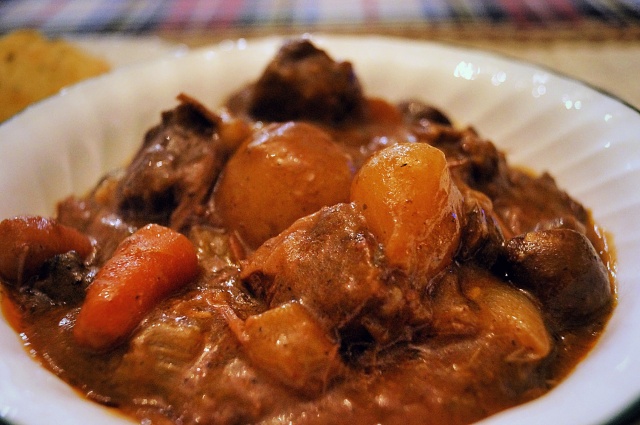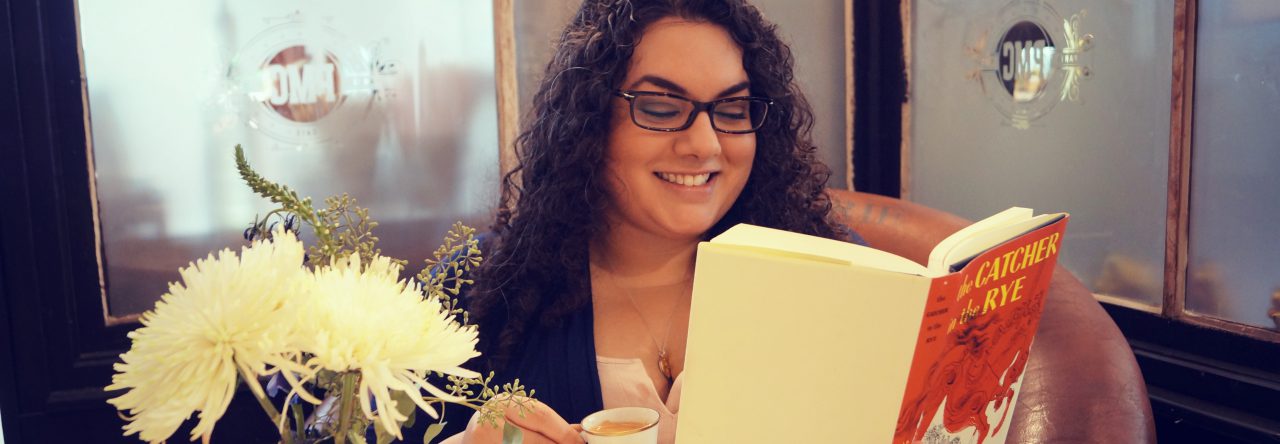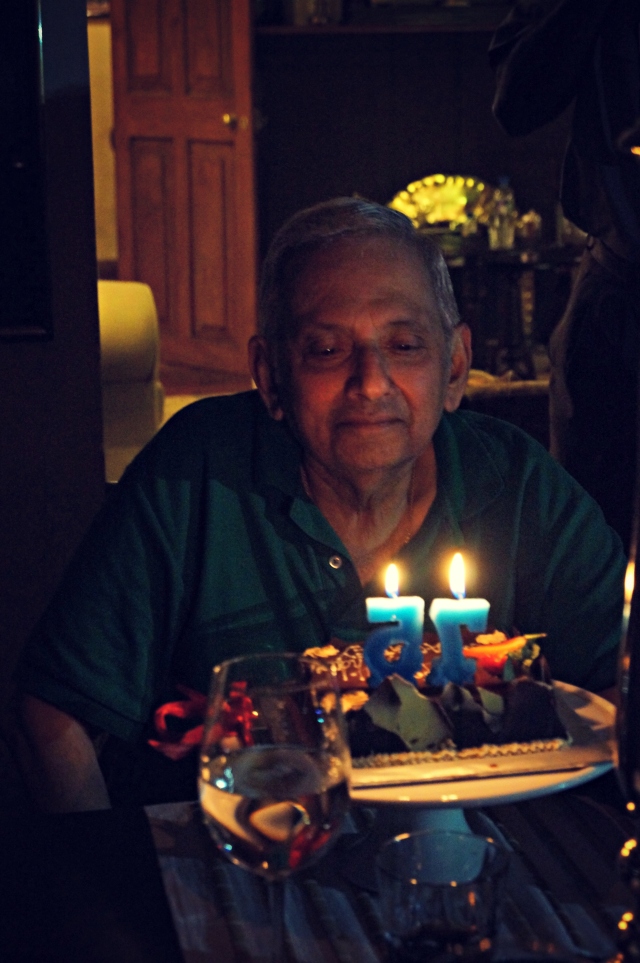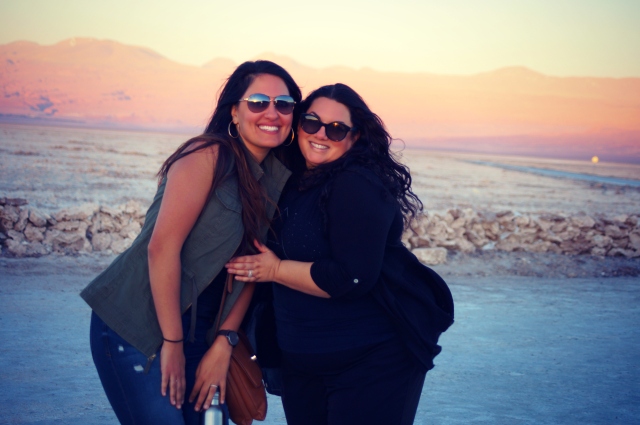
A couple of weekends ago, I had a really lousy Saturday. I know woke up cranky and that my bad mood lingered, eventually ripening into full-blown indignation by midday. I picked arguments with my husband over trivial issues. I’m pretty sure I resurrected a few larger challenges that we’d put to rest long ago. Slight irritation festered as I tidied the house and changed diapers. Somewhere towards the afternoon, we sat down and worked through the funk. In an attempt to salvage the evening, we agreed on a series of compromises – this show instead of that movie, this meal instead of that other dish that I wanted but he didn’t. Now, I don’t always cook dinner. In fact, my husband probably cooks more often than I do, and we order out more often than that. But some nights, you just want the feeling of working towards something, so I offered to cook, and we settled on beef stew.
That’s how we came to eat this particular dish for dinner, and it’s why I’m here writing this story now. Before I began cooking, I texted my friend, whom I’d been venting to all day. She was managing her own series of frustrations and disappointments. We shared a laugh over the ridiculousness of expectations and the ease with which moods and plans go astray. At the end, she dubbed this dish “Compromise Beef Stew” and made me promise to blog about the whole ordeal that led to its creation. I agreed, and here we are.
The best part of this whole story is that by the next day, when I sat down to actually blog about the whole thing, I’d forgotten the entire content and context of that anger. I have absolutely no idea what upset me or why we disagreed. No clue.
And isn’t that beautiful, actually? That if we allow ourselves to bend a little, compromise, and ultimately let go of our expectations and frustrations, we can come out the other end pleasantly surprised?
In the end, the stew turned out to be really, really delicious. It satisfied in the way that only compromises can — where the surprise is the joy, because what you got wasn’t what you wanted, but was somehow what you needed after all.
Although this stew definitely doesn’t comprise on flavor, it’s come to represent to me the satisfaction that comes from working to find common ground. This stew begs to be eaten on a cold winter’s night, preferably beside the fire with a glass of red wine and hours of conversation on the horizon – but it’s also really comforting at the end of a frustrating Saturday, right before you settle in with your bestie to binge watch The Great British Bake-Off.
Ingredients
Just as there are gaps in my memory of the rotten morning that led me to make this stew, there are also gaps in my recipe. For some reason, I didn’t write down all my ingredients and steps – just some of them – so I’ve had to walk myself through making this ten times in my head just to get this post finished. Fingers crossed that I haven’t left out something major.
- 1 chuck roast – should be somewhere in the ballpark of 3-4 lbs
- You really want the chuck roast to be well marbled. Lots of fat = juicy, flavorful, tender meat. Also, you really want to specifically get a chuck roast. Other cuts just don’t perform as well.
- 1 tbsp Canola Oil
- 2 slices of thick bacon
- Making this stew made me pause and reflect on just how often I cook with pork. The answer is a lot. A lot a lot. I’ve got lots of Muslim and Jewish friends who don’t eat pork, and if you don’t eat pork for one reason of another, you could leave out the bacon and instead use some other animal fat as the base. Butter or Canola oil could possibly work. I do think that the bacon adds a layer of flavor and complexity, but the bacon itself isn’t actually in the stew. Once I rendered the fat, I made a BLT. Yum.
- 1 tsp Uncle Roy’s Flowers of Scotland seasoning
- This has been rebranded as Rabbie’s Scottish Seasoning. Now, you could make this stew without this seasoning, but it really does add something special, and I think every pantry should have some of this and Rabbie’s Ayshire Meadows (formerly “Uncle Roy’s Moffat Meadows”). Here’s the duo. For any of my Savannah-based friends, The Olfactory Company at 15 West York Street sells these spices.
- If you don’t have this spice blend, you’ll want to sub in some additional herbs for flavor. I recommend:
- 1/8 tsp each of rosemary, basil, marjoram, oregano, parsley, tarragon, thyme and a dash of allspice
- 1 tsp dried thyme
- 3 bay leaves
- 1 tsp salt – plus additional salt for the meat and possibly more salt to taste
- 1 tsp black pepper – plus additional pepper for the meat
- 2 tsp sweet Hungarian paprika ( I always use this brand)
- 32 oz (4 cups) beef broth*
- *Here’s the thing: I didn’t make a note of how much beef broth I used. Sigh. I don’t know why I do this to myself. I think I used one 32 oz box – so 4 cups – but I’m not sure. I’ve checked at least ten different recipes from Google, and some call for as little as 2 cups, others call for as much as 6 cups. I’m guessing 4 cups feels right. If it seems to be too little liquid, add some more. You can always laddle out excess later.
- 3 tsp tomato paste
- 1 tsp Dijon mustard
- 3 or 4 dashes Worcestershire sauce
- 2 tbsp butter
- 1/4 cup gluten free flour for coating the beef
- You could easily sub in regular flour if you’re not gluten free. I have an allergy, so I have to use gluten free flour.
- 1.5 lbs (24 oz) bag of small, round white or yellow potatoes – leave them whole
- I used White Delight potatoes because that’s what the grocery store had in stock. Any small white or yellow potato should work, though.
- Most stews call for russet potatoes, and they work well as they cook down and thicken the sauce. However, I really enjoy how succulent and flavorful these potatoes become – like potato flavor bombs for your mouth. Plus, you don’t have to cut them up – just toss them in whole. Since this recipe calls for a roux to thicken the base, if you use chopped russet potatoes, I recommend halving the roux quantity and seeing if the stew is thick enough before adding more.
- 3 celery stalks, sliced
- 2 cups carrots
- I used baby carrots because I was feeling lazy and happened to have them, but regular carrots work just as well. I just cut the baby carrots in half – again, because laziness. Cut them to whatever size works for you.
- Approx. 1/4 cup red wine to deglaze the pot (I used Merlot because I had some on hand)
- 16 oz package baby bella mushrooms, chopped into whatever size makes you happy
- I pretty much quarter them since I love a hearty chunk of mushroom.
- 1 medium yellow onion, diced
- 4 cloves garlic, cut into quarters
- You could mince the garlic if you prefer. I like the more noticeable nibbles of garlic.
- 1-1.5 cups fresh pearl onions, peeled, with the ends trimmed off
- Ok, so this is totally optional, but it does add a delicious layer to the stew. I love onions, so I wanted to showcase them – not cook them down into the base, which is what happens to the diced onion noted above. Also, I happened to have these pearl onion on had. Frozen might work (and will be a lot less labor-intensive), but I haven’t tried them. If you try frozen pear onions, let me know how it works out.
- Blonde roux for thickening the stew
- Heat 4 tbsp butter over medium heat, and once melted, whisk in 4 tbsp gluten free all purpose flour until the roux is a light brown.
A note on the cooking apparatus: I recommended using an enameled cast iron dutch oven. I have a Le Creuset dutch oven that one of my best friends bought me as a present years ago, and it’s perfect for this stew. I know that they are expensive, though, and you don’t have to use one. You also don’t have to have an expensive dutch oven like a Staub or Le Creuset. Any enameled, cast iron dutch oven would work. If you do have one, though — or if you have the means and desire to buy one — trust me that it makes a difference in the quality of the stew. Cooking the stew in the oven heats the contents from all angles, resulting in succulent, buttery, incredible meat and tender potatoes and veggies. I’ve used a crock pot, and Instapot, and a regular stainless steel pot on the stove. The oven-based dutch oven method by far produces the best results.
If you do end up cooking the stew on the stove top, the cook time should stay pretty much the same. If you use a crockpot, 10 hours on low should work.




Directions
- To prepare the meat, sprinkle the chuck roast liberally with salt and pepper. I like to pat the salt and pepper down to help it adhere to the meat. Do not cut up the chuck roast. Then, coat the whole chuck roast in the gluten free flour, again, patting it down to help the flour settle onto the meat.
- Now, most recipes will have told you to cut up the chuck roast into cubes first and then coat it in flour. Here’s the reason I’m telling you not to do that. One problem I noticed over the years I’ve spent trying to perfect a beef stew recipe was that no matter what I did, the beef in my stew always came out a bit tough. I could cook it for crazy long amounts of time on low-low heat, but it never mattered. The meat would still be just that little bit tough – not juicy and tender like I desired. I’ve tried crock pots, Instapots, dutch ovens, and stainless steal pots. I’ve cooked it in the oven and on the stove, and still, the same issue. Last winter, I got tired of the disappointment and decided to do some research as to what was going wrong. The verdict? Cutting up the meat and flouring it before searing it was resulting in overcooked meat before the beef even went into the pot for its long simmer. There are a number of great articles about this online, so I’ll spare you my own less-qualified explanation of the whole problem. In a nutshell, the bottom line is that it’s really hard to sear the meat properly so that you lock in the flavor without beginning to essentially steam it if you cut up the meat. Now you could sear the chunks in teenty, tiny batches to properly manage the searing, but who has time for that.
- Put the 1 tbsp of Canola Oil in a non-stick pan and heat it over high heat. Once the pan and oil is hot, sear the whole chuck roast on each side. Your meat should have a beautiful, golden brown crust. It shouldn’t take long. Maybe a minute on each side – maybe even less. Just keep an eye on it.
- To sear the meat, you want high heat. Incidentally, that’s why you want to use Canola or another oil that’s able to withstand high heat. Take the time to let your pan get nice and hot. I use a non-stick pan because I’m just not talented enough to not burn the beef in the dutch oven. You do you. Theoretically, you should be searing this beautiful chuck roast in a the pot you use to cook the stew, but I can’t ever make that work, so here we are.
- Set aside the chuck roast. You want to let it rest for at least 10 minutes. While the meat is resting, preheat your oven to 325 F and begin working on the rest of the stew.
- Heat your dutch oven on the stove over medium-high heat. Once the pot is hot, cook your two pieces of bacon until they are nice and crispy. Remove the bacon to a separate plate and snack on it as you cook the rest of this stew, because why not. Yum.
- If you are talented enough to not destroy your chuck roast attempting to sear it in the dutch oven, you’d ideally brown the meat in the bacon fat, then soften your onions, then your other veggies and spices, and finally you’d deglaze the pot at that point. But, since I’m not capable of executing that set of steps, here’s my next step…..
- Toss the chopped up medium onion into the bacon grease and saute until the onions are beginning to carmelize.
- Add the garlic and saute for another minute to release the flavor. Deglaze the pot with the red wine. Be sure to scrap up all the delicious bits. Turn up the heat a little and allow the red wine to cook down a bit.
- Add the following ingredients to the wine-onion-garlic mixture:
- 3 tsp tomato paste
- 1 tsp Dijon mustard
- 3 or 4 dashes Worcestershire sauce
- 3 bay leaves
- Add the beef broth to the wine-onion-garlic-etc mixture. Bring the broth to a boil and then turn down to low, allowing it to gently simmer.
- Return your attention to the pan where you seared the beef. Add the 2 tbsp butter and warm it along with the remaining oil over medium heat.
- Once the pan is hot but before the yummy flour bits burn (don’t let that happen; when in doubt, lower the heat), add in the remaining veggies (except the potatoes):
- 3 celery stalks, sliced
- 2 cups carrots, chopped
- 16 oz package baby bella mushrooms, chopped
- 1-1.5 cups fresh pearl onions
- Once the veggies are just beginning to soften, add the remaining spices and mix everything together, continuing to saute the veggies for another minute or two.
- 1 tsp Uncle Roy’s Flowers of Scotland seasoning
- 1 tsp dried thyme
- 1 tsp salt
- 1 tsp black pepper
- 2 tsp sweet Hungarian paprika
- Add the veggies to the simmering broth in the dutch oven. Add in the potatoes, give everything a nice stir, and turn the heat even lower. You’re basically just keeping things warm while you shift your attention to the meat.
- That beautiful, browned chuck roast you’ve been resting? Now you want to cut it up. Slice it into approximately 1-inch cubes, and add those cubes to the other stew components in the dutch oven. Give everything a good stir to mix the elements together.
- You’re going to thicken this stew with a roux later, so don’t fret over the fact that all your meat won’t be coated and seared on every side. I promise it’s ok. If it makes you feel better, you can sprinkle a little additional flour on the meat, but resist the urges to try and brown it more. I promise it will be ok.
- Now that you’ve got your symphony of delicious flavor composed (who says puns are dead? lol), put the lid on your dutch oven, put it in that oven you heated to 325 F, and go do something cool. You’ve got time, since this will cook for at least 3 hours.
- After 3 hours, check the stew. The beef should be buttery and tender and delish – we’re talking basically melt-in-your mouth tender. If it’s not quite there, give it another 30 minutes. Otherwise remove the stew from the oven and set it aside.
- Make your blonde roux (see steps above in the ingredients list), and then add it to the stew. Stir to incorporate for about a minute, until the stew thickens.
- Adjust salt and pepper to taste if necessary. Serve hot.





With gratitude,














































































